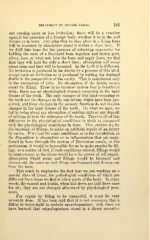Page 327 - My FlipBook
P. 327
TREATMENT OF DENTAL CABLES. 191
out causing more or less irritation; there will be a reaction
against the presence of a foreign body, whether it be in the soft
tissues or in bone. Any plug that we may place in a living bone
will be loosened by absorption about it within a short time. If
we drill into bone for the purpose of attaching apparatus for
holding the ends of a fractured bone together and fasten gold,
silver, iron, or what not, into the bone and apply force, we find
that they will hold for only a short time ; absorption will occur
about them and they will be loosened. In the teeth it is different.
No irritation is produced in the dentin by a process of this kind,
except such an irritation as is produced by cutting the dentinal
fibrils in the preparation of the cavity. This is manifested only
in the production of pain. No absorption of the dentin occurs
about the filling. There is no vascular system that is interfered
with; there are no physiological changes occurring in the hard
tissues of the tooth. The only changes of this kind occurring in
the teeth are the changes in the sensations, which have been pre-
sented, and these changes in the sensory function do not involve
changes in the hard tissues of the tooth. Do what we may, we
fail to bring about any absorption of calcium salts or any deposit
of calcium salts in the substance of the tooth. There is all of this
difference in the physiological conditions in teeth as compared
with the physiological conditions in bone. This enables us, by
the insertion of fillings, to make an artificial repair of an injury
by caries. If we had the same conditions as to the circulation, or
the disposition to absorption or to inflammation that are mani-
fested in bone through the system of Haversian canals, or the
periosteum, it would be impossible for us to make repairs by fill-
ing ; as a matter of fact, if such conditions existed, fillings would
be unnecessary, as the tissue would have the power of self-repair.
Absorption would occur and fillings would be loosened and
thrown out, the same as such things are loosened and thrown out
from the bone.
This much to emphasize the fact that we are working on a
special class of tissue, the pathological conditions of which are
different from those we find in other parts of the body. In other
words, the enamel and dentin, when laid down are laid down once
for all; they are not changed afterward by physiological proc-
esses.
For repair by filling to be successful, it must be very
minutely done. It has been said that it is not necessary that a
filling be water-tight to exclude microorganisms ; and, since we
have learned that microorganisms stand in a direct causative


